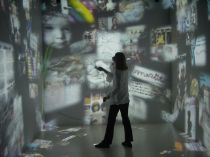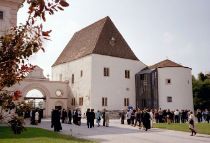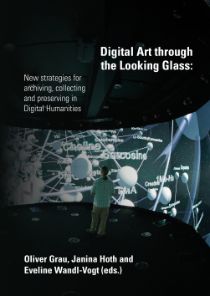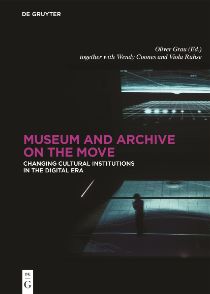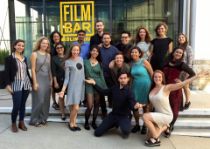Since 2002, the image sciences at Danube University Krems have seen themselves as a transdisciplinary response to the digital image and media revolution of our time, analysing transformation processes in culture, science and political iconography. With online image and video archives as well as new analysis methods, the Digital Humanities are constantly being developed. For this reason, we work very closely with the international field of museums, archives and media as well as (media) artists and institutions of the humanities and cultural studies. The following archives built up by the Center for Image Science with international cooperation partners are available as resources:
In addition to the quantitative increase of visual media, the lab investigates the qualitative characteristics of the visual in the production, distribution and reception of knowledge. In addition to art and cultural studies analysis, reception research (image, emotion, immersion) is focused on relevant areas of the visual (from the field of art to popular and scientific culture to social networks). International research projects currently being conducted at the ADHL in this regard therefore focus on the documentation of media art and its analogies and differences to earlier art forms, its visualization potential (political iconography of core themes of recent media art history), its aesthetics and preservation. Both the research on immersion and the "Commented Bibliography of Digital Arts Research Publications" will be continued.
The project "Interactive Archive and Meta-Thesaurus for Media Art Research", funded by the ARC and FWF integrates media art into art history, in which it has been underrepresented to date. It is also planned to investigate new questions of digital humanities, such as the influence of artistic inventions in the digital age, through projection research with high-resolution 2D and 3D image material as well as research into data annotation, new digital search tools and innovative methods of analysis (Big Data). The resulting contributions (based on thousands of sources) will serve to provide an overall history of the human relationship to the image. Last but not least, the internationally renowned research on immersion (visual strategies with which viewers are involved in the novel pictorial worlds) will be deepened. The results of this research flow into study programmes such as Digital Collections Management and MediaArtHistories, Media Art Cultures (Erasmus+), which are unique in the German-speaking world and therefore of strategic importance for the Austrian humanities.
The Center for Image Science's international conferences, such as the World Conference Series for Media Art History, the Austrian Congress of Art Historians or the International Conference on Image Research, as well as research projects on media art, digital archiving and historical image research, make the DIS the leading institution in Austria for image-based digital humanities.
Art & Digital Humanities LAB
The main goal of the Art & Digital Humanities Lab is the further development of online database and research tools for the documentation of media art. The team investigates the conditions of documentation and conservation of media art online, analyzes case studies and data analyses of media art in its aesthetic, socio-political and technological characteristics with a focus on image-centered methods. With these innovative research methods, questions about artistic inventions, practices and influences in the digital age can be investigated and put into context with new questions in the digital humanities.
Expansion of a systematic documentation of the most important media art movements. The aim is to integrate them comprehensively into art history and make them comparable by developing new instruments, such as the first Web 2.0 3.0 archive for the history of images and a comprehensive bridging thesaurus.
Project Lead: Viola Rühse
Image Science and Media Art Research
The digital image turns out to be a complex system that is not only complicated to interpret, but is also permeated by a rapidly developing and increasing complexity. With the algorithmic, computational, digital and even post-digital turns of recent decades, the digital image has become ephemeral, experimental, immersive, interactive, multimodal and processual, due to its emergence from various digital technologies. In order to understand the increasingly present phenomenon of digital imagery, new transdisciplinary theories are needed that can unite concepts from image science, art history, digital humanities and media art.
Media Art Institutions (DARIAH)
In the course of the DARIAH-DASTIN project, a new community profile for media art institutions was developed. As part of the Archive of Digital Art (ADA, digitalartarchive.at) the infrastructure in research, teaching and exhibition of this contemporary art is to be made visible. With institutions such as museums, festivals, research centres, universities, music festivals and hackathons, every area of media art infrastructure is covered. Institutions can upload and manage information themselves.
Re:Trace (State of Lower Austria)
The most important research results of the current conference "Re:Trace", which took place for the first time in Lower Austria and Vienna in November 2017 under the honorary protection of the Governor Johanna Mikl-Leitner, will appear as three sub-publications due to the higher coverage. With more than 250 participants from 50 countries, "Re:Trace" was the most successful edition of the conference series so far, which takes place on a different continent every two years. The conference series was headed by Prof. Dr. Oliver Grau (DUK) and Prof. Dr. Inge Hinterwaldner (Humboldt University, Berlin).
Visual Literacies (VILI, Erasmus+)
Lead Prof. Dr. Oliver Grau, Implementation: Dr. Ramon Reichert
In 2018 the international research project Visual Literacies was completed, which examines the role and significance of visual media in the production, communication and dissemination of scientific knowledge. Partners were Lancaster University, CARDET (Cyprus), WIDE Services (Greece). In this context, different techniques and practices of visual knowledge dissemination were systematically compared, critically reflected and historically-genealogically addressed. Video is omnipresent today in the age of online moving image media (YouTube, Vimeo, Benchfly or Ooyala) and forms the collective knowledge on the Internet.
In continuation of Horst Bredekamp's image-act theory (2010), the question was raised as to how far image producers carry out actions on and with images, and, following Bruno Latour's Actor Network Theory (2005), it was discussed in what ways images attain the potential for action and can become agents in material-media relationships. In the course of the project, an open platform with didactically prepared research and teaching materials based on the theory models and empirical evaluations was established with 5 webinars. https://mooc.viliproject.eu/
